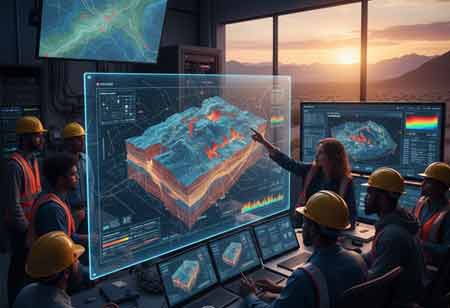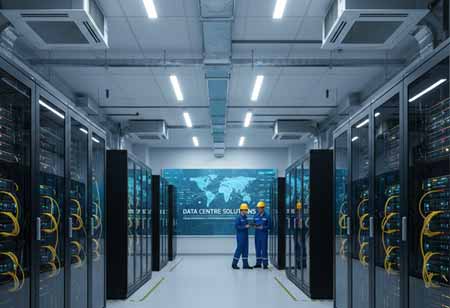THANK YOU FOR SUBSCRIBING
AI's Role in Accelerating Resource Development Across APAC
AI and ML are revolutionizing mineral exploration in the APAC region, enhancing data analysis and predictive modeling for efficient resource discovery beneath complex geology.

By
Apac CIOOutlook | Thursday, October 23, 2025
Stay ahead of the industry with exclusive feature stories on the top companies, expert insights and the latest news delivered straight to your inbox. Subscribe today.
Fremont, CA: The Asia-Pacific (APAC) region, with its diverse and complex geology, represents a critical frontier for mineral resource exploration. As demand for essential minerals continues to rise globally, the industry is increasingly turning to Artificial Intelligence (AI) and Machine Learning (ML) to revolutionize the discovery process. This technological leap is fundamentally changing how geoscientists interpret vast, multi-layered datasets, leading to a new era of predictive and efficient exploration.
Data Fusion and Pattern Recognition
At the heart of AI's transformative power is its exceptional ability to integrate multi-source data. Traditional exploration relies on human analysis of disparate datasets—geophysical surveys, geochemical samples, remote sensing imagery, and historical drilling logs. Machine learning algorithms, however, can ingest and fuse these massive, heterogeneous data streams simultaneously.
By applying sophisticated computational methods, ML algorithms like Random Forests and Convolutional Neural Networks (CNNs) can identify subtle, non-linear relationships and hidden geological patterns that are often invisible to the human eye. This capability allows for the generation of a more comprehensive and coherent understanding of the subsurface geology, moving beyond isolated pieces of evidence.
Enhancing Prospectivity Modeling
The primary application of machine learning in exploration is prospectivity modeling. This process moves away from purely subjective targeting to a data-driven, probabilistic approach. Algorithms are trained on known mineral occurrences and their associated geological, geophysical, and geochemical signatures.
Once trained, the models can then predict the likelihood of new mineral deposits across expansive, little-explored areas. This capability is particularly vital in the APAC region, where much of the potential remains concealed beneath thick cover, soil, or complex tectonic environments. The output is typically a mineral predictive map that visually delineates high-potential target zones, allowing exploration teams to focus their efforts and resources with unprecedented precision.
ML is also driving advancements in creating more accurate and detailed 3D Earth models. By clustering and classifying downhole logs, bore-core images, and seismic data, AI can automate the complex task of lithological mapping and structural interpretation in three dimensions.
This deeper, three-dimensional understanding of the orebody's geometry, continuity, and grade distribution is crucial not only for initial discovery but also for later resource estimation. AI helps to model the spatial relationships between different geological units and mineralization controls, providing a robust digital twin of the subsurface that can be virtually explored and refined.
The long-term trajectory sees machine learning moving towards real-time intelligence in the field. This includes the development of automated systems that can analyze data from drone surveys or in-situ drilling sensors instantaneously. Furthermore, AI techniques are being explored for real-time mineral classification on rock samples and drill chips, accelerating decision-making and optimizing drilling strategies as work progresses.
AI is equipping the exploration industry in the APAC region with an objective, data-intensive toolset that significantly enhances the ability to make meaningful discoveries. It transforms exploration from a high-risk endeavor based heavily on intuition into a calculated, technologically-backed process.





